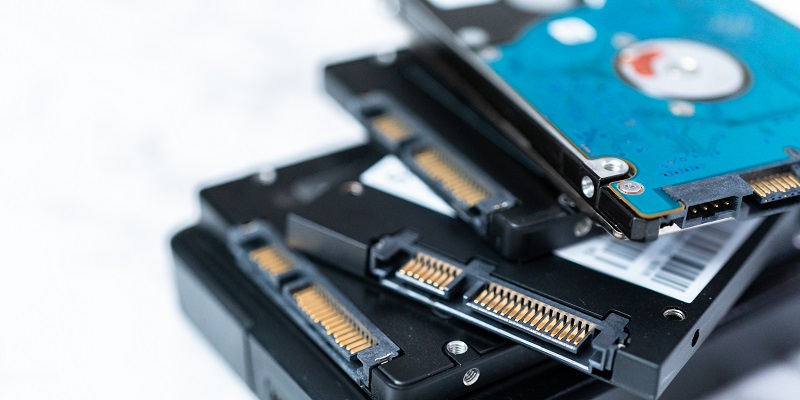When it comes to storage options for thin and lightweight devices, the M.2 specification provides an ideal solution. M.2 sockets can be found on many modern server and desktop PC motherboards. In this article, we will take a closer look at the M.2 specification, M.2 SSDs, PCIe and Non-Volatile Memory Express (NVMe), Serial ATA (SATA), and the differences between SATA and M.2.
The M.2 specification
M.2 is a specification that provides a way for device makers to fit flash storage modules into thin and light devices, such as ultrabooks and tablets. The M.2 specification differs from its predecessor, mSATA, in terms of its physical size, connector type, and bus interface. M.2 uses a variety of connector types, including B, M, and B+M, and can support a range of interfaces, including PCIe and SATA.
Description of M.2 Sockets
M.2 sockets are horizontal slots located mainly on motherboards, but are also found in some laptops, which can accommodate M.2-based SSDs. M.2 SSDs have a small form factor, allowing them to fit into a wide range of devices. Due to their smaller size, M.2 SSDs can also be used in compact systems where a 2.5-inch hard drive would not fit.
M.2 on server and desktop PC motherboards
M.2 sockets can be found on many modern server and desktop PC motherboards, allowing device makers to provide additional storage options without having to increase the size of the device. Furthermore, many M.2-based SSDs now support PCIe NVMe, enabling even faster data transfer speeds.
M.2 SSDs
M.2 SSDs come in a variety of sizes in terms of storage space and physical dimensions. As a result, M.2 SSDs can provide storage options for devices of different sizes, from ultrabooks to compact desktops.
Different Sizes and Storage Space
M.2 SSDs are available in a range of storage options, with typical sizes ranging from 128GB to 2TB. Differences in size and storage space can also impact the performance of the SSD, with larger devices generally offering higher read and write speeds.
M.2 SSDs have a small form factor, with varying lengths and widths. Common sizes include 2280, which measures 22mm wide and 80mm long, and 2242, which measures 22mm wide and 42mm long. The compatibility with different M.2 sockets depends on the physical dimensions of the SSD.
PCIe and Non-Volatile Memory Express (NVMe)
An M.2 SSD that supports PCIe enables it to use Non-Volatile Memory Express (NVMe), a modern protocol that is much faster than old protocols like AHCI. NVMe is capable of speeds up to 7 GB/s, making it incredibly fast compared to SATA.
“How PCIe Enables NVMe” is properly capitalized
NVMe uses PCIe lanes to transfer data between the storage device and the motherboard. PCIe lanes provide a much faster data transfer rate than SATA bus interfaces. As a result, devices with PCIe NVMe SSDs can load the operating system and programs quickly, making computing easier and more efficient.
Maximum speeds of up to 7GB/s
One of the most significant benefits of using an M.2 SSD that supports PCIe NVMe is the high speeds it can achieve. Top-tier NVMe drives can offer sequential read speeds of up to 7GB/s and write speeds of up to 6.5GB/s. These speeds can make a significant difference in system performance, especially when it comes to loading large files or running software that requires fast input/output (I/O) operations.
Serial ATA (SATA)
SATA is a bus interface used to connect SSDs, hard disk drives (HDDs), and optical drives. It was first introduced in 2003 and has since become the standard interface for most storage devices.
Description of the SATA Bus Interface
The SATA interface provides a low-cost way to connect storage devices to a motherboard. It uses a small, flat cable to transmit data between the storage device and the motherboard. SATA supports multiple data transfer modes, including 1.5Gbit/s, 3.0Gbit/s, and 6.0Gbit/s.
Used to connect SSDs, HDDs, and optical drives
SATA is the most common interface used to connect storage devices to desktop and laptop computers. It is used to connect hard disk drives (HDDs), solid-state drives (SSDs), and optical disc drives.
SATA data transfer speeds
SATA can reach speeds of around 600MB/s. The best SATA SSDs in the storage industry can reach speeds of 600-700MB/s. The fastest SATA drives can be twice as fast as traditional hard drives but not as fast as NVMe M.2 SSDs that support PCIe.
Hot plug support
SATA supports hot plugging, allowing you to connect or disconnect a device while the computer is running.
Advanced Host Controller Interface (AHCI) Interface Compatibility
SATA is designed to work with the Advanced Host Controller Interface (AHCI), a specification that controls the data flow between the storage device and the computer. AHCI makes it easier for the operating system to communicate with the storage device, which improves overall performance.
A comparison of SATA and M.2
It’s important to note that SATA is a bus standard for storage devices, while M.2 is a form factor and interface. NVMe SSDs outperform SATA drives in terms of data transfer speed. This is largely due to the use of PCIe lanes in NVMe, which provide much faster data transfer rates than SATA.
The M.2 specification allows device makers to fit flash storage modules into thin and light devices. M.2 sockets can be found on many server and desktop PC motherboards, providing additional storage options. M.2 SSDs come in a variety of sizes in terms of storage space and physical dimensions, making them ideal for a range of devices. PCIe and Non-Volatile Memory Express (NVMe) provide significant performance benefits over SATA, and it’s vital to consider this difference when choosing storage options for your device or system.

